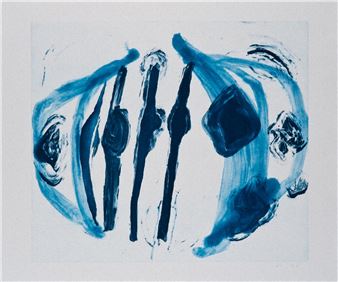Kaz Oshiro: Diffuse Reflection
The exhibition brings together a new body of work which, according to the artistÔÇÖs working method, looks at first glance like mere objects of everyday life, metal suitcases or steel filing cabinets, which evoke the idea of the commercial gallery or the office. These objects identified immediately by the visitor as ordinary consumer products appear to be following a more careful observation, delicately and precisely painted canvas, stretched over the frame and then assembled together to form these objects paintings in three dimensions.
Following this first deceptive look, then reveals the finesse and precision of the artistÔÇÖs work, his interest in hyperrealistic sculpture and the technique of ÔÇ£trompe lÔÇÖ┼ôilÔÇØ (which recounts the history of the art from Antiquity to Pop Art), may come as noted by Ed Schad in his text ÔÇ£An Ethic of Modesty ÔÇ£of the attraction of the artist for ┬½ a particular form of quiet ┬╗. Ed Schad recounts an anecdote explaining the genesis of his creation is ÔÇ£one of his original impulses for making modular forms (everyday objects of variable sizes) was that he didnÔÇÖt want to have to vulgarly compete for prime spaces in group show exhibitions. Instead of back biting and posturing for his work to be placed in central locations Oshiro wanted his work to function anywhere, even in the smallest, most undistinguished corners of the gallery. In other words, he wanted his work to be solid and have presence even while being understated. ┬╗
The last set of works presented at the gallery uses another iconic form of art history, that of the monochrome. But again, a form of subterfuge happens, at first glance, the frames of paintings with vibrant colors: pink, lemon yellow, turquoise confronting darker ones: navy blue, khaki, seem to have been twisted with bare hands, slightly reminding the method (though less violent) of Steven Parrino, the surface of the paintings being then crumpled or folded. Again, however, it is ÔÇ£simulated destructionÔÇØ, each frame having been meticulously manufactured, each fold shaped, each piece of tape carefully hand painted.

Recommended for you
The exhibition brings together a new body of work which, according to the artistÔÇÖs working method, looks at first glance like mere objects of everyday life, metal suitcases or steel filing cabinets, which evoke the idea of the commercial gallery or the office. These objects identified immediately by the visitor as ordinary consumer products appear to be following a more careful observation, delicately and precisely painted canvas, stretched over the frame and then assembled together to form these objects paintings in three dimensions.
Following this first deceptive look, then reveals the finesse and precision of the artistÔÇÖs work, his interest in hyperrealistic sculpture and the technique of ÔÇ£trompe lÔÇÖ┼ôilÔÇØ (which recounts the history of the art from Antiquity to Pop Art), may come as noted by Ed Schad in his text ÔÇ£An Ethic of Modesty ÔÇ£of the attraction of the artist for ┬½ a particular form of quiet ┬╗. Ed Schad recounts an anecdote explaining the genesis of his creation is ÔÇ£one of his original impulses for making modular forms (everyday objects of variable sizes) was that he didnÔÇÖt want to have to vulgarly compete for prime spaces in group show exhibitions. Instead of back biting and posturing for his work to be placed in central locations Oshiro wanted his work to function anywhere, even in the smallest, most undistinguished corners of the gallery. In other words, he wanted his work to be solid and have presence even while being understated. ┬╗
The last set of works presented at the gallery uses another iconic form of art history, that of the monochrome. But again, a form of subterfuge happens, at first glance, the frames of paintings with vibrant colors: pink, lemon yellow, turquoise confronting darker ones: navy blue, khaki, seem to have been twisted with bare hands, slightly reminding the method (though less violent) of Steven Parrino, the surface of the paintings being then crumpled or folded. Again, however, it is ÔÇ£simulated destructionÔÇØ, each frame having been meticulously manufactured, each fold shaped, each piece of tape carefully hand painted.















